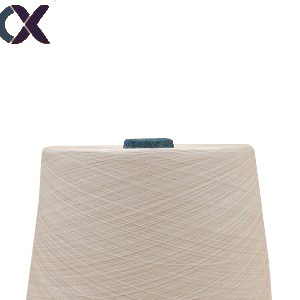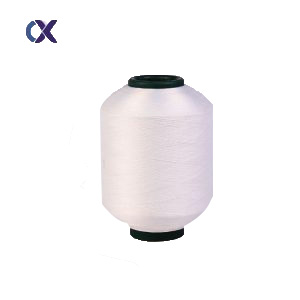- Chinese
- French
- German
- Portuguese
- Spanish
- Russian
- Japanese
- Korean
- Arabic
- Irish
- Greek
- Turkish
- Italian
- Danish
- Romanian
- Indonesian
- Czech
- Afrikaans
- Swedish
- Polish
- Basque
- Catalan
- Esperanto
- Hindi
- Lao
- Albanian
- Amharic
- Armenian
- Azerbaijani
- Belarusian
- Bengali
- Bosnian
- Bulgarian
- Cebuano
- Chichewa
- Corsican
- Croatian
- Dutch
- Estonian
- Filipino
- Finnish
- Frisian
- Galician
- Georgian
- Gujarati
- Haitian
- Hausa
- Hawaiian
- Hebrew
- Hmong
- Hungarian
- Icelandic
- Igbo
- Javanese
- Kannada
- Kazakh
- Khmer
- Kurdish
- Kyrgyz
- Latin
- Latvian
- Lithuanian
- Luxembou..
- Macedonian
- Malagasy
- Malay
- Malayalam
- Maltese
- Maori
- Marathi
- Mongolian
- Burmese
- Nepali
- Norwegian
- Pashto
- Persian
- Punjabi
- Serbian
- Sesotho
- Sinhala
- Slovak
- Slovenian
- Somali
- Samoan
- Scots Gaelic
- Shona
- Sindhi
- Sundanese
- Swahili
- Tajik
- Tamil
- Telugu
- Thai
- Ukrainian
- Urdu
- Uzbek
- Vietnamese
- Welsh
- Xhosa
- Yiddish
- Yoruba
- Zulu
- Kinyarwanda
- Tatar
- Oriya
- Turkmen
- Uyghur

Blogs
Chenille yarn is highly favored in the fields of home textiles and fashion clothing due to its unique soft touch and rich velvety appearance. The charm of this distinctive yarn stems from its complex and meticulous production process. From the careful selection of raw materials to the formation and post – treatment of the yarn, every step determines the final quality and characteristics of chenille yarn. Next, we will delve into the mysteries of the chenille yarn process.
I. Raw Material Selection
The selection of raw materials for chenille yarn is a crucial step in laying the foundation for its quality. Common raw materials include natural fibers, chemical fibers, and their blended materials.
Among natural fibers, cotton fibers are one of the commonly used raw materials for chenille yarn due to their softness and good moisture absorption. Yarns made from cotton fibers are comfortable to the touch and are suitable for making close – fitting clothing or soft fabrics for home decoration. Wool fibers are known for their warmth and fluffiness. Chenille yarns with wool are often used in winter fabrics and high – end home textile products, endowing the products with a warm and luxurious texture.
In terms of chemical fibers, polyester fibers are frequently used to enhance the durability of chenille yarn and reduce costs because of their high strength, wear resistance, deformation resistance, and affordability. Acrylic fibers, which resemble wool in appearance, have good dyeing properties and a lower price. They can give chenille yarn a rich range of colors while maintaining good fluffiness.
In actual production, different fibers are rationally blended according to the product’s application and performance requirements. For example, blending cotton with polyester fibers can not only maintain the softness and comfort of cotton but also enhance the strength and wear resistance of the yarn, making it suitable for making home textiles such as curtains and sofa covers. Blending wool with acrylic fibers can reduce costs while retaining the warmth of wool and the bright colors of acrylic, which is often used for making blankets, woolen fabrics, etc.
II. Core Production Process
(I) Core Yarn Preparation
The core yarn serves as the framework of chenille yarn, providing support for the strength and shape of the yarn. Core yarns usually consist of single – strand or multi – strand yarns with high strength, such as polyester monofilaments or nylon multifilaments. During the preparation process, parameters such as the linear density and twist of the core yarn need to be precisely controlled according to the specifications and applications of the final chenille yarn. For example, for chenille yarns used to make lightweight curtains, the core yarn has a relatively small linear density and a moderate twist to ensure the softness and drape of the yarn. For chenille yarns used to make thick carpets, the core yarn requires a larger linear density and a higher twist to enhance the strength and wear resistance of the yarn.
(II) Pile Yarn Preparation
The pile yarn is the key part that gives chenille yarn its unique velvety feel. There are several methods for preparing pile yarns. A common method is to comb fibers into parallel fiber bundles and then twist them to form the pile yarn. During the combing process, it is necessary to ensure the parallelism and straightness of the fibers to guarantee the quality of the pile yarn. The degree of twisting is also of great importance. If the twist is too low, the pile yarn is likely to loosen, affecting the appearance and performance of the chenille yarn. If the twist is too high, the pile yarn will be too tight and lose its fluffy velvety feel. In addition, the appearance and hand feel of the pile yarn can be adjusted by changing the type, length, and fineness of the fibers. For example, pile yarns prepared from longer and finer fibers will result in chenille yarns with a more delicate and soft velvety feel, while pile yarns made from shorter and coarser fibers will give chenille yarns a rough and fluffy style.
(III) Covering and Shaping
The prepared core yarn and pile yarn are covered and shaped through special equipment, which is the core step in the production of chenille yarn. During the covering process, the pile yarn is evenly wound around the core yarn. Through the traction and tension control of the mechanical device, the pile yarn is closely attached to the core yarn, forming chenille yarn with a unique appearance and hand feel. This process requires precise control of the feeding speed of the pile yarn, the traction speed of the core yarn, and the tension relationship between them. If the feeding speed of the pile yarn is too fast or the tension is too high, the pile yarn will accumulate unevenly, affecting the appearance of the yarn. If the traction speed of the core yarn does not match the feeding speed of the pile yarn, the structure of the yarn will be unstable, resulting in looseness or breakage. By continuously adjusting and optimizing these parameters, chenille yarns of different specifications and styles can be produced to meet diverse market demands.
III. Post – treatment Process
(I) Dyeing and Finishing
Dyeing is an important process for endowing chenille yarn with rich colors. Due to the special structure of chenille yarn, its dyeing process is relatively complex. Before dyeing, the yarn needs to be pretreated to remove surface impurities and grease to ensure the uniformity and color fastness of dyeing. When dyeing, appropriate dyes and dyeing processes are selected according to the properties of the selected fibers. For example, for chenille yarns with a high cotton fiber content, reactive dyes are often used for dyeing. Through high – temperature and high – pressure or low – temperature dyeing methods, the dyes chemically react with the fibers to form a firm bond. For chenille yarns with a high polyester fiber content, disperse dyes are used for dyeing. The solubility of disperse dyes under high – temperature and high – pressure conditions allows the dyes to penetrate into the fibers and achieve the dyeing effect. After dyeing, the yarn also needs to be finished, such as softening treatment and antistatic treatment, to further improve the hand feel and usability of the yarn.
(II) Setting Treatment
The purpose of setting treatment is to stabilize the structure and shape of the chenille yarn, preventing it from deforming during subsequent processing and use. Setting treatment usually adopts the method of heat setting, treating the dyed and finished chenille yarn under certain temperature and tension conditions. The control of temperature and tension is the key to setting treatment. Excessive temperature will damage the fibers and affect the strength and hand feel of the yarn, while too low a temperature will not achieve the setting effect. Appropriate tension can make the structure of the yarn tighter and the shape more stable. Through setting treatment, the dimensional stability of the chenille yarn is improved, the velvety feel lasts longer, and it can better meet the needs of textile processing and consumer use.
IV. Process Innovation and Development
With the continuous progress of science and technology and the changing market demands, the chenille yarn process is also constantly innovating and evolving. On the one hand, the application of new equipment and technologies has improved the production efficiency and quality stability of chenille yarn. For example, automated core yarn and pile yarn preparation equipment and intelligent covering and shaping devices can precisely control various parameters in the production process, reducing the influence of human factors and producing more uniform and high – quality chenille yarn. On the other hand, in order to meet consumers’ demands for environmental protection and functionality, researchers are committed to developing environmentally friendly dyes and finishing agents, as well as chenille yarns with antibacterial, waterproof, and anti – staining functions. In addition, by combining chenille yarn with other special fibers or materials, new yarn products with unique appearances and properties are created, further expanding the application fields of chenille yarn.
Previous News
Functional Yarn: The Revolutionary Power of Tex...Next News
Acrylic Yarn: The Colorful Magician in Artistic...Share:
Feature Product
-
 Wool yarn
Wool yarn1.Product Introduction Wool yarn, often also kn...
-
 Viscose yarn
Viscose yarn1.Product Introduction Viscose yarn is a popula...
-
 Spandex Yarn
Spandex Yarn1.Product Introduction Elastane, another name f...
